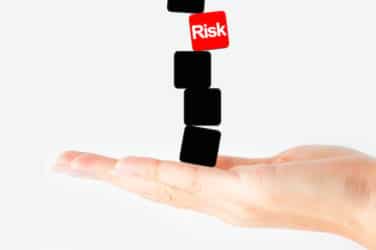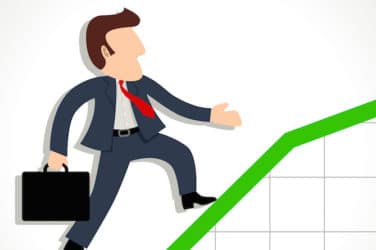(this article originally appeared on Bloomberg)
It’s happening again.
Markets around the world, from stocks to metals and bonds, have slowed to a crawl, revisiting lows in volatility that have stood for two years. Muted moves just sent a cross-asset gauge of price swings in equities, rates, currency and commodities to the lowest since 2014.
That everything should go quiet at once just before the U.S. election is especially alarming to a cadre of market watchers who see threats stretching from Washington to Beijing. They see a rerun of past bouts of torpor that sometimes ended spectacularly, a consequence of efforts by central banks to keep the ugly side of markets hidden.
How quiet is it? Bank of America Merrill Lynch’s GFSI Market Risk Index, a measure of future price swings implied by options trading on global equities, interest rates, currencies and commodities, has fallen for five straight days, the longest such streak since May. It now sits at the lowest level since December 2014.
Tranquility is pronounced in the Treasury market. The Merrill Lynch Option Volatility Estimate, a gauge of expected price swings in the government-issued securities, is at a level it hasn’t seen in two years.
Not everyone sees evidence of distortion. While risks exist, the drop in market anxiety has coincided with a reduction in uncertainty when it comes to U.S. politics and policy. Hillary Clinton’s odds of victory are close to the highest on record at 86.5 percent, according to forecaster FiveThirtyEight. That’s up from 54.8 percent on Sept. 26, the date of her first debate with Donald Trump.
Likewise, investors appear to be coming to terms with the inevitability of a Federal Reserve interest-rate increase in December. Traders were pricing in on Tuesday in New York a 73 percent chance of a rate hike by year’s end, up 10 percentage points from a week ago, based on the assumption that the effective Fed funds rate will trade at the middle of the new FOMC target range.
Yield Hunt
“Until we get something that really surprises the market, we’re going to continue in this low volatility,” Hank Smith, who helps manage more than $6 billion as chief investment officer at Haverford Trust Co. in Radnor, Pennsylvania, said by phone. “Neither the election nor the Fed’s rate decision have people particularly worried right now.”
Traders may also perceive a clearer outlook for global monetary policy after the European Central Bank and the Bank of Japan last week signaled no urgent need to reduce asset-purchase programs.
Diminished price swings have encouraged investors to pile into higher-yielding emerging-market assets. Exchange-traded funds that buy stocks and bonds in developing nations have attracted about $24 billion over the past 21 weeks, the best run in more than a year, according to data compiled by Bloomberg.
In a note published Tuesday, Morgan Stanley’s strategists advised their clients buy currencies including the Brazilian real, Russia’s ruble and the Indonesian rupiah against the dollar, citing “strong risk appetite” and reduced levels of volatility.
Investor Psychology
“There are still people that are skeptical about the Fed, but there’s certainly been movement toward the idea that they’ll do something after the election,” John Carey, a Boston-based fund manager at Pioneer Investment Management, which oversees about $230 billion, said by phone. “While a small rate increase will likely have minimal impact on the economy, it’s much more consequential to investor psychology.”
Tranquility has also crept into currency trading, with the JPMorgan Chase & Co. global currency volatility index falling to the lowest level since December. The Bloomberg Dollar Spot Index, which measures the U.S. currency against 10 major counterparts, slid 0.1 percent on Tuesday, a day after reaching the strongest level since March 16.
Volatility in the dollar index “will continue to contract” heading into November as Clinton widens her lead, Peter Rosenstreich, head of market strategy in Gland, Switzerland, at Swissquote Bank SA, said in an interview.
In the stock market, the so-called fear gauge for the S&P 500 Index is just above 2 percentage points from the more than two-year low reached in August. The CBOE Volatility Index sits 29 percent below its average since the start of the 7 1/2-year equity bull market.
“We are having a slow growth rate around the world,” said Thomas Stolper, founder of advisory firm Embankment Capital Management Ltd. in London and former chief currency strategist at Goldman Sachs Group Inc. “There’s no real sign of overheating and there’s no immediate sign of a substantial slowdown. Central bank actions are depressing volatility even further.”
Rising confidence in who will win the presidential election has damped bets on stock market volatility in the near-term. Futures contracts on the VIX for November fell to less than 16 after the final presidential debate last week, as Clinton’s odds for winning spiked. The measure had been stuck above 17 for almost a month.
The equity market was similarly calm heading into the June’s Brexit referendum, with the VIX falling 12 percent in the week leading up to the decision. Implied volatility for 30-day S&P 500 at-the-money contracts was actually below the average level of the prior year heading into the vote, Bloomberg data showed. Measures of currency and bond-market volatility also tumbled as the referendum neared.
While declines in cross-asset volatility indexes may suggest that investors are getting comfortable, it’s also possible that they’re too nervous about the future to make any big bets, according to Carey.
“There’s a chance that people aren’t complacent — they just don’t know what to do and want to see what happens before they make a decisive move,” said Carey. “That could be keeping people from developing confidence in any particular trajectory. They might just be sitting on their hands here.”





